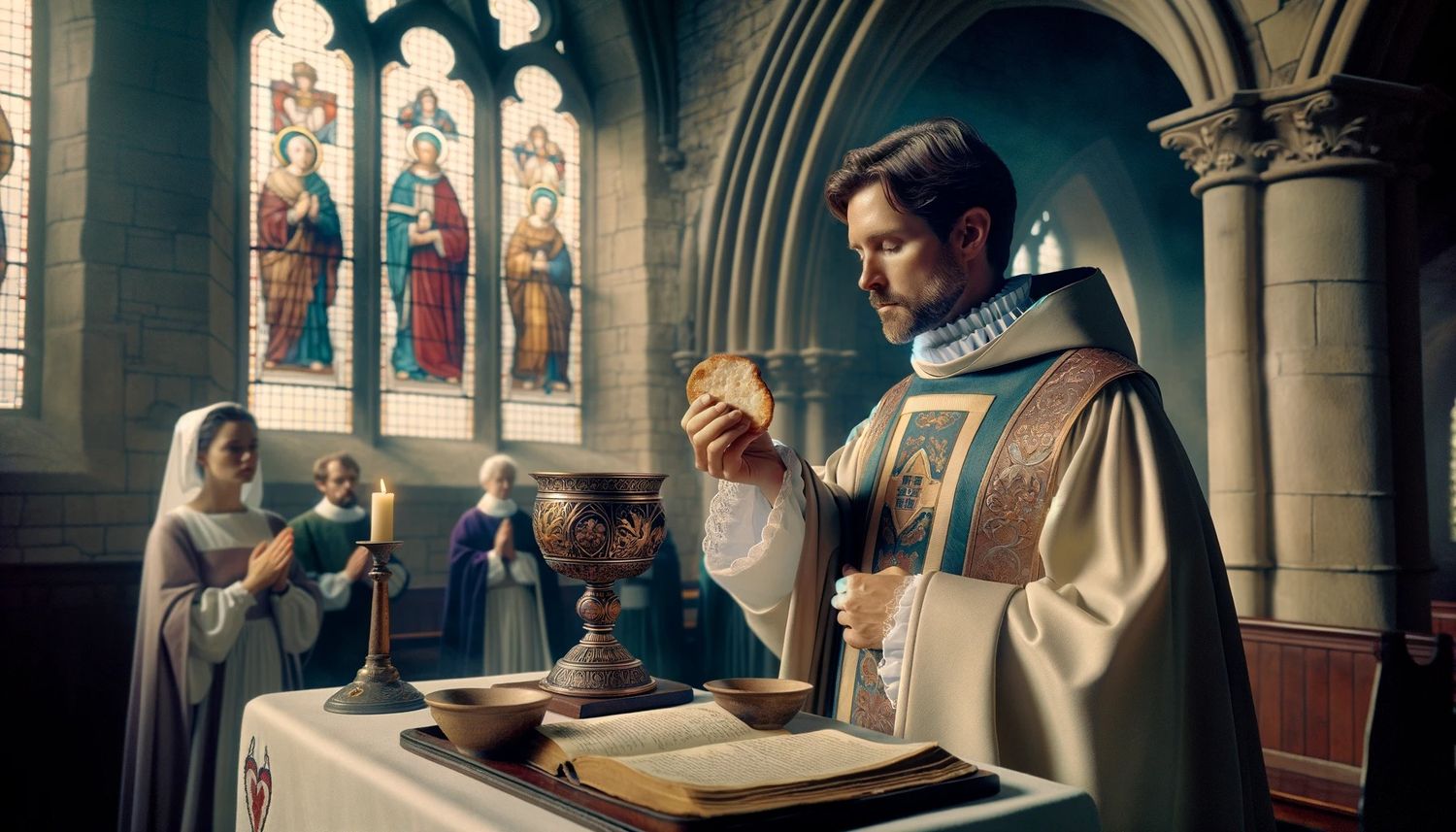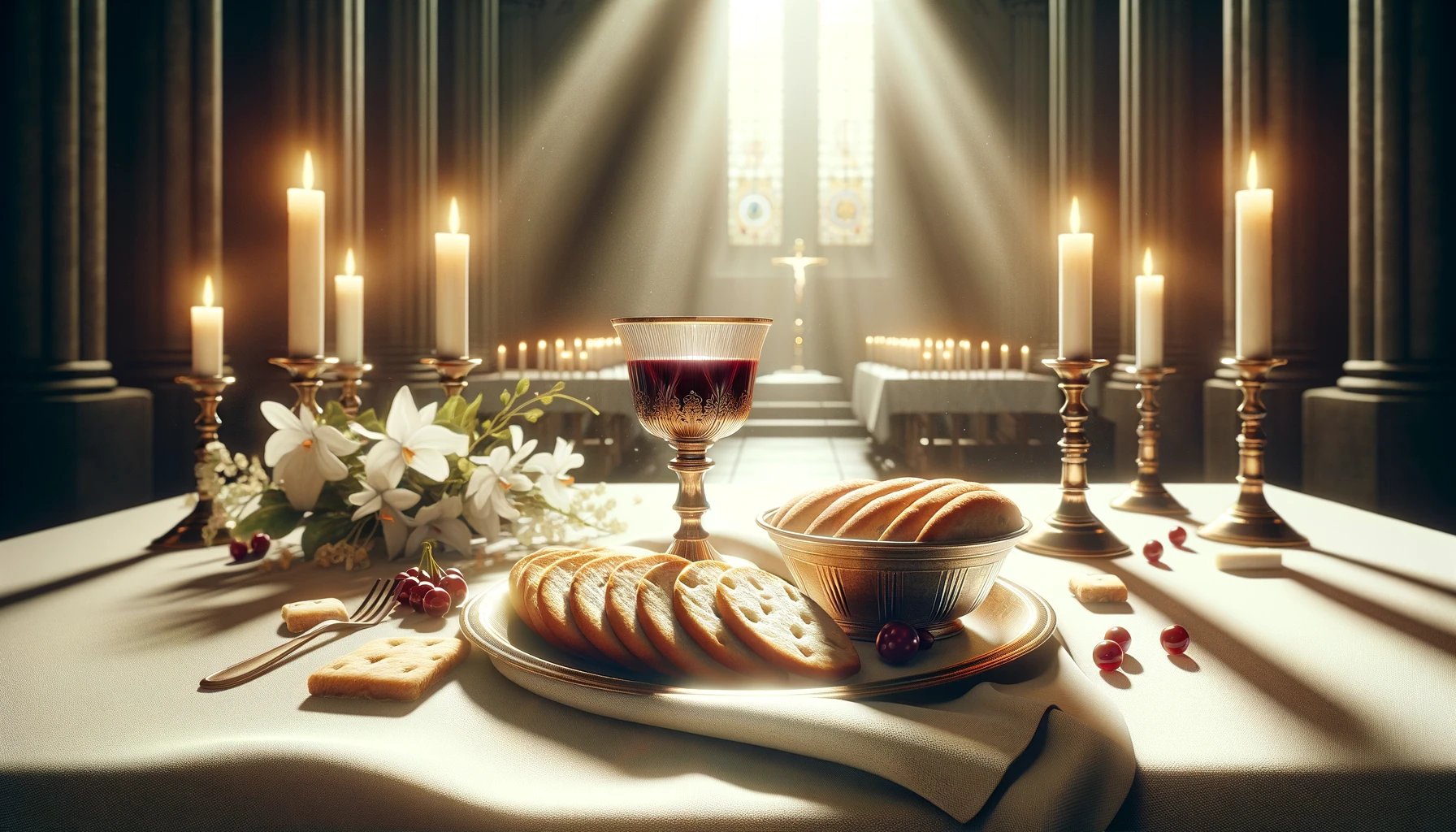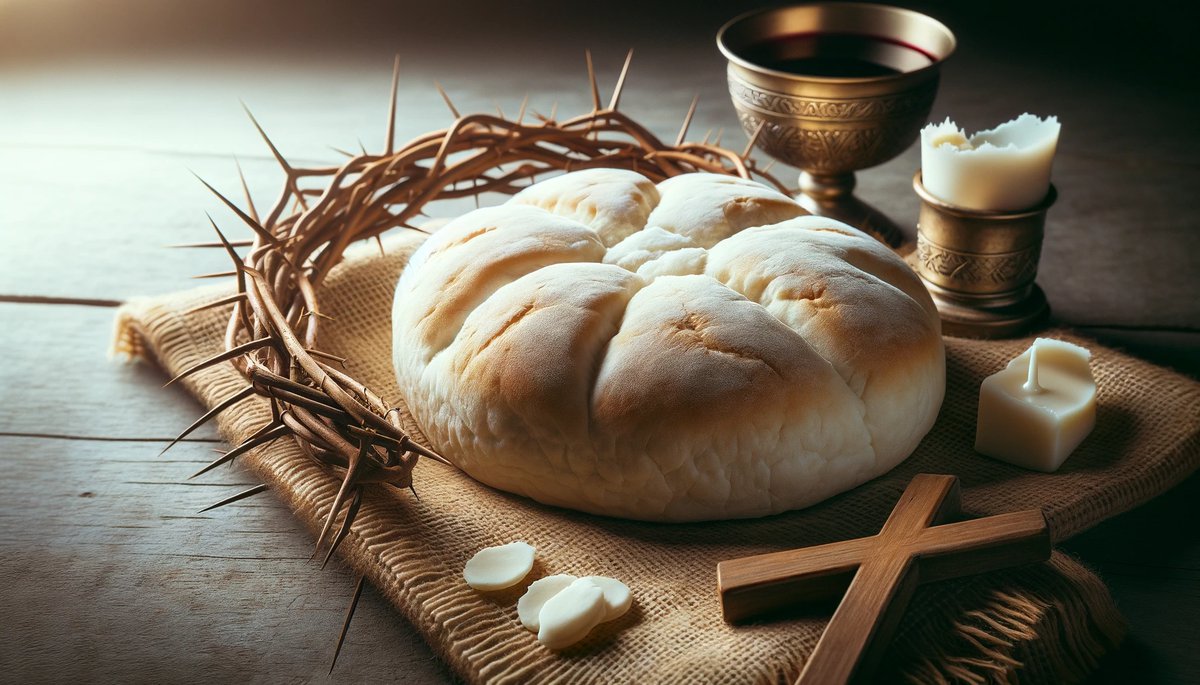Home>Theology and Spirituality>Why Do Lutheran Churches Dip The Bread Into The Wine


Theology and Spirituality
Why Do Lutheran Churches Dip The Bread Into The Wine
Published: March 3, 2024
Ericka Andersen, an editor at Christian.net, expertly merges digital strategy with content creation, focusing on faith and societal issues. Her communication skills enhance the platform's engaging narratives, fostering meaningful dialogue on belief's impact on society.
Discover the theological significance of dipping bread into wine in Lutheran churches. Explore the spiritual symbolism and traditions in theology and spirituality.
(Many of the links in this article redirect to a specific reviewed product. Your purchase of these products through affiliate links helps to generate commission for Christian.net, at no extra cost. Learn more)
Table of Contents
The Practice of Intinction in Lutheran Churches
Intinction is the act of dipping the bread into the wine during the celebration of the Eucharist or Holy Communion. In Lutheran churches, this practice is often observed as a way of administering the sacrament. The act of intinction holds significant symbolism and historical roots within the Lutheran tradition, and it is important to understand its theological significance and practical considerations within the context of Lutheran worship.
-
Symbolism of Unity: Intinction symbolizes the unity of Christ's body and blood. By combining the bread and wine in this manner, Lutheran believers express their belief in the inseparable connection between Christ's body and blood, as well as their unity as the body of Christ.
-
Reverence and Respect: The act of intinction is often seen as a way of showing reverence and respect for the elements of the Eucharist. By carefully dipping the bread into the wine, participants demonstrate a sense of solemnity and honor for the sacred symbols of Christ's body and blood.
-
Personal Connection: Intinction allows for a more personal and tactile experience during the reception of the Eucharist. By physically dipping the bread into the wine, individuals can engage with the sacrament in a tangible and intimate manner, fostering a deeper spiritual connection.
-
Historical Roots: The practice of intinction has historical roots in the early Christian church and has been a part of Christian worship for centuries. In Lutheran tradition, the historical significance of intinction adds depth and richness to the practice, connecting present-day believers to the ancient roots of their faith.
-
Alternative to Individual Cups: In some Lutheran congregations, intinction serves as an alternative to the use of individual cups for distributing the wine. This can be a practical consideration, especially in settings where logistical challenges or concerns about hygiene may arise.
In Lutheran churches, the practice of intinction is a meaningful and significant aspect of the Eucharistic celebration. Understanding the symbolism, historical roots, and practical considerations of intinction can enrich the worship experience for participants and deepen their appreciation for this sacred tradition.
Read more: What Wine Do Churches Use For Communion
The Symbolism of Dipping Bread into Wine
-
Unity of Christ's Body and Blood: Intinction symbolizes the unity of Christ's body and blood. By combining the bread and wine in this manner, Lutheran believers express their belief in the inseparable connection between Christ's body and blood, as well as their unity as the body of Christ.
-
Reverence and Respect: The act of intinction is often seen as a way of showing reverence and respect for the elements of the Eucharist. By carefully dipping the bread into the wine, participants demonstrate a sense of solemnity and honor for the sacred symbols of Christ's body and blood.
-
Personal Connection: Intinction allows for a more personal and tactile experience during the reception of the Eucharist. By physically dipping the bread into the wine, individuals can engage with the sacrament in a tangible and intimate manner, fostering a deeper spiritual connection.
-
Historical Roots: The practice of intinction has historical roots in the early Christian church and has been a part of Christian worship for centuries. In Lutheran tradition, the historical significance of intinction adds depth and richness to the practice, connecting present-day believers to the ancient roots of their faith.
-
Alternative to Individual Cups: In some Lutheran congregations, intinction serves as an alternative to the use of individual cups for distributing the wine. This can be a practical consideration, especially in settings where logistical challenges or concerns about hygiene may arise.
In Lutheran churches, the act of dipping bread into wine holds profound symbolism, reflecting the unity of Christ's body and blood, reverence for the sacred elements, and the personal connection individuals seek with the sacrament. This practice, rooted in history and tradition, offers a meaningful way for believers to engage with the Eucharist and express their faith in a tangible and reverent manner.
Historical Roots of Intinction in Lutheran Tradition
-
Early Christian Practices: The historical roots of intinction in Lutheran tradition can be traced back to the early Christian church. Intinction was a common practice in the early centuries of Christianity, where the bread was dipped into the wine before being received by the faithful. This historical precedent demonstrates the enduring nature of intinction as a method of administering the Eucharist.
-
Liturgical Traditions: Throughout the history of the Christian church, various liturgical traditions have incorporated intinction as a significant element of the Eucharistic celebration. In the Lutheran tradition, the historical use of intinction in liturgical worship has contributed to its continued presence as a meaningful practice within the faith community.
-
Symbolism in Ancient Rituals: The historical significance of intinction is also evident in the symbolism found in ancient Christian rituals. The act of dipping the bread into the wine was laden with deep spiritual meaning, symbolizing the unity of Christ's body and blood, as well as the participation of believers in the life-giving sacrifice of Jesus Christ.
-
Reformation Era: During the Reformation era, the Lutheran tradition sought to retain certain historical practices while reforming others. Intinction emerged as a practice that resonated with the theological and liturgical sensibilities of the Lutheran reformers, leading to its continued use within Lutheran worship.
-
Continuity and Connection: By maintaining the practice of intinction, Lutheran churches uphold a sense of continuity with the historical roots of Christian worship. This connection to the early church and the traditions of the faith serves to enrich the worship experience and deepen the spiritual significance of the Eucharist for Lutheran believers.
The historical roots of intinction in Lutheran tradition are deeply intertwined with the early practices of the Christian church, the development of liturgical traditions, and the enduring symbolism found in ancient rituals. This historical continuity underscores the significance of intinction as a cherished and meaningful aspect of Lutheran worship.
The Theological Significance of Intinction in Lutheran Worship
-
Sacramental Union: Intinction holds theological significance in Lutheran worship as it embodies the concept of sacramental union. This theological principle emphasizes the real presence of Christ in the Eucharistic elements. By dipping the bread into the wine, Lutheran believers affirm their belief in the spiritual reality of Christ's body and blood being present in, with, and under the bread and wine. This act serves as a tangible expression of the profound mystery of the Eucharist, reinforcing the Lutheran understanding of sacramental union.
-
Participation in Christ's Sacrifice: The theological significance of intinction also relates to the believer's participation in Christ's sacrificial offering. Through the act of receiving the dipped bread, individuals symbolically partake in the sacrificial nature of Christ's death and resurrection. This participation underscores the Lutheran belief in the redemptive power of Christ's sacrifice and the transformative impact it has on the lives of believers.
-
Unity and Communion: Intinction reflects the theological emphasis on unity and communion within the body of Christ. As participants partake in the Eucharist through intinction, they symbolically unite with Christ and with one another as members of the Christian community. This act of sharing in the common cup, where the bread and wine are combined, signifies the spiritual bond and fellowship that believers experience through their shared faith in Christ.
-
Reverence and Awe: The theological significance of intinction also encompasses the reverence and awe with which Lutheran believers approach the Eucharist. By carefully dipping the bread into the wine, individuals demonstrate a deep sense of respect for the sacred elements and the spiritual realities they represent. This reverent approach to the Eucharist reflects the Lutheran understanding of the profound mystery and sanctity of Christ's presence in the sacrament.
-
Continuity with Tradition: In Lutheran worship, the theological significance of intinction is further underscored by its continuity with the historical traditions of the Christian faith. By maintaining this practice, Lutheran churches affirm their connection to the early church and the enduring theological principles that have shaped Christian worship throughout the centuries. This continuity serves to anchor the theological significance of intinction within the broader context of the Lutheran tradition.
The theological significance of intinction in Lutheran worship encompasses the affirmation of sacramental union, participation in Christ's sacrifice, the expression of unity and communion, reverence for the sacred elements, and continuity with the historical traditions of the Christian faith. This theological depth enriches the experience of the Eucharist for Lutheran believers and underscores the profound spiritual realities embodied in the act of intinction.
Practical Considerations for Intinction in Lutheran Communion Services
-
Logistical Efficiency: Intinction can offer a practical solution for Lutheran churches, especially in large congregations, where the distribution of individual cups of wine may present logistical challenges. By combining the act of receiving the bread and wine into a single gesture, the process of administering the sacrament can be streamlined, ensuring a more efficient and organized communion service.
-
Hygienic Concerns: In light of hygienic considerations, particularly in the context of health-related concerns or during times of illness outbreaks, intinction provides a hygienic alternative to the use of individual cups. This can help mitigate the risk of cross-contamination and minimize the potential spread of germs, addressing the health and safety needs of the congregation.
-
Accessibility and Inclusivity: Intinction can enhance the accessibility of the Eucharist for individuals with physical limitations or disabilities. For those who may have difficulty holding and drinking from individual cups, the act of receiving the dipped bread can offer a more accessible means of partaking in the sacrament, ensuring inclusivity for all members of the faith community.
-
Stewardship of Resources: From a practical standpoint, intinction can be a way for Lutheran churches to exercise good stewardship of resources. By utilizing a single chalice for the wine and a common loaf for the bread, the practice of intinction can minimize the use of disposable cups and wafers, aligning with principles of environmental stewardship and sustainability.
-
Cultural and Traditional Relevance: In certain cultural or regional contexts, intinction may hold particular significance or resonance with the congregation. Embracing the practice of intinction can honor the cultural and traditional preferences of the community, fostering a sense of familiarity and connection with the worship experience.
-
Educational Opportunities: Introducing the practice of intinction in Lutheran communion services can also provide educational opportunities for teaching and reflection on the theological and historical significance of the Eucharist. This can deepen the understanding and appreciation of the sacrament among members of the congregation, enriching their spiritual journey.
In Lutheran communion services, practical considerations for intinction encompass logistical efficiency, hygienic concerns, accessibility and inclusivity, stewardship of resources, cultural and traditional relevance, and educational opportunities. By carefully considering these practical aspects, Lutheran churches can thoughtfully integrate the practice of intinction into their communion services, enriching the worship experience for their members.















